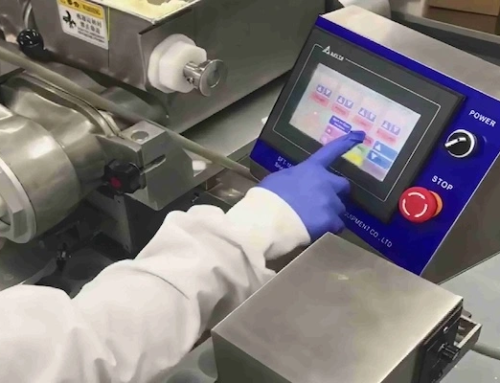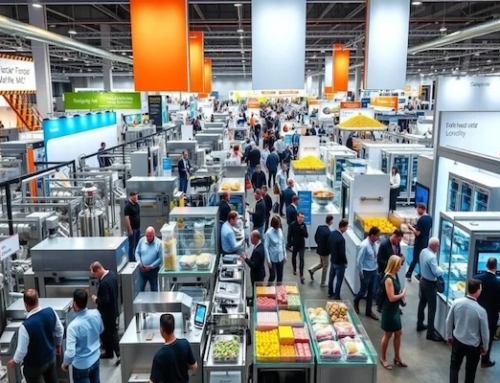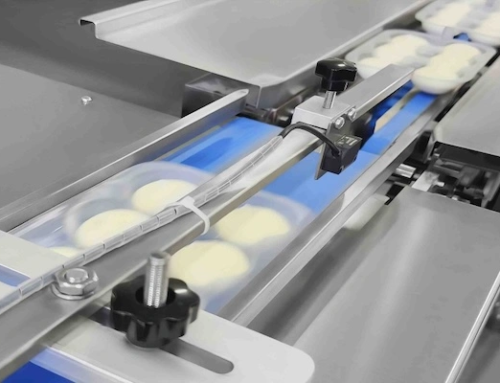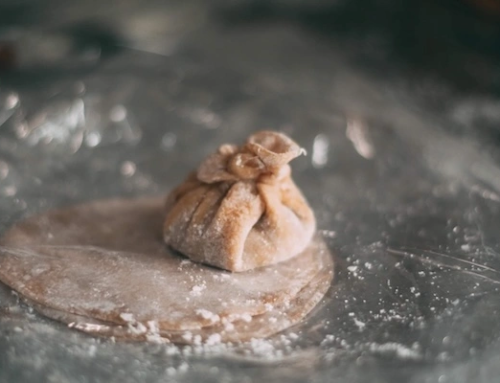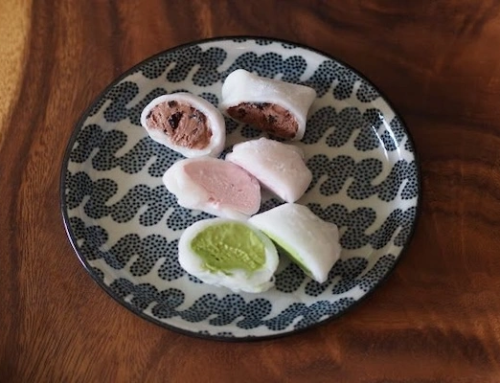Mochi ice cream is the hippest dessert of the past decade. Japanese soft, chewy mochi and Western creamy ice cream together are a dreamy collision of smooth textures, a hedonist’s treat. From cult food to Supermarket shelf staple, Tokyo-to-New York dessert cafe menu entry, mochi ice cream has traveled far.
With growing popularity being created, cost-effective ways of manufacture are a requirement. If you’re in the frozen foods industry, own a candy store, or are a company that wants to increase product lines, you’re likely interested in learning about how these machines work—and whether or not it would be something that would be helpful to include in your business plan. This article has everything you need to know about mochi ice cream machines, such as how they work, the most critical features, and how to choose one suitable for your business.
1. What is a Mochi Ice Cream Machine?
Mochi ice cream machine is a grade production equipment designed to automate the cumbersome process of covering thin mochi dough around cold ice cream centers. Mochi ice cream machines are designed for repeated, high-volume use to meet frozen dessert manufacturers’ requirements for speed and precision.
The equipment is specifically designed to handle two extremely different materials—soft, tacky mochi dough and temperature-sensitive ice cream—without disrupting their texture and form. It imparts a blend of coordinated movements to leave the final product sealed, round, and stable for packing and cold storage.
Typically constructed of food-grade stainless steel and featuring programmable logic controls (PLCs), these machines enable industrial-grade standards when it comes to cleanliness, automation, and expandability. These are the main pieces of equipment in contemporary production lines of mochi ice cream used by factories, private labelers, and foodservice companies alike.
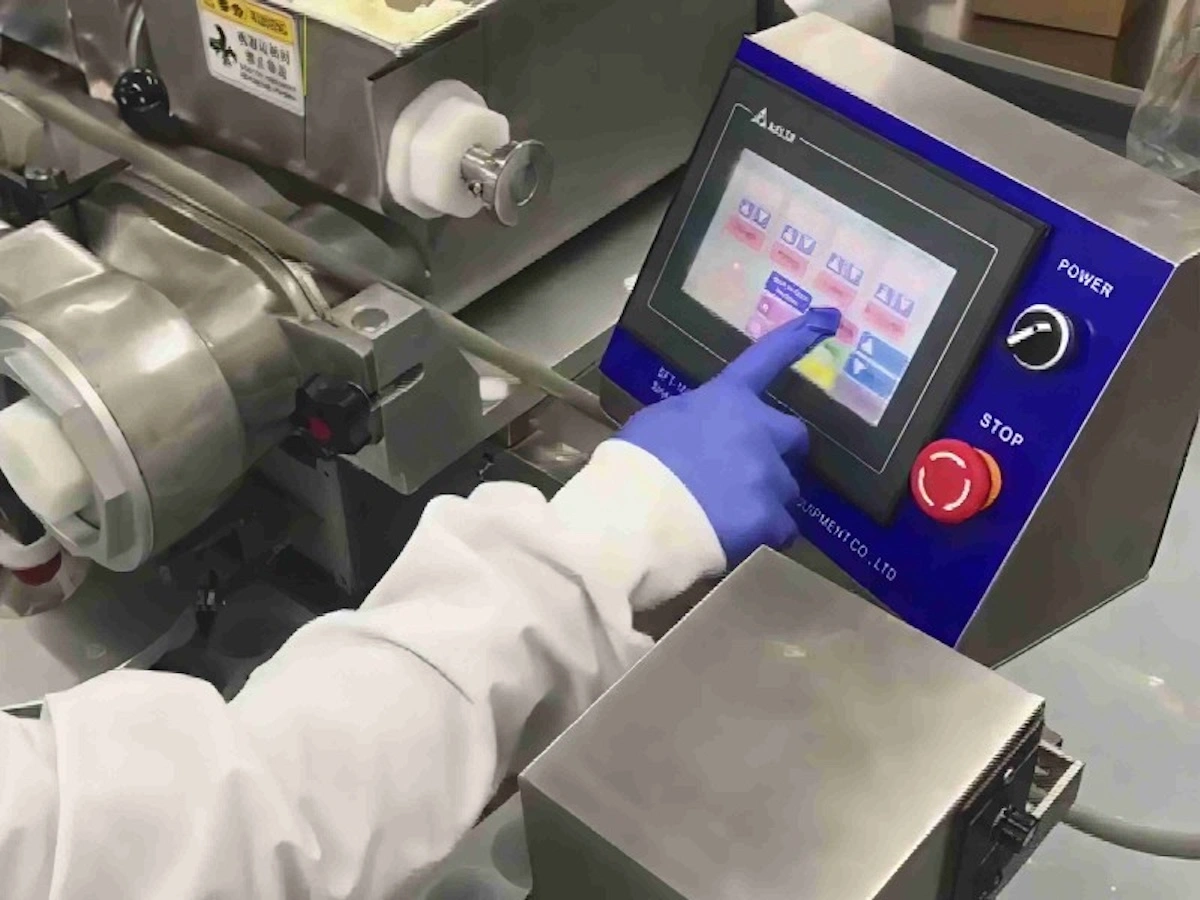
2. How Does a Mochi Ice Cream Machine Work?
The mochi ice cream machine is manufactured in a step-by-step manner, precisely controlling the motion of every ingredient to create an even and quality output:
- Mochi Dough Feeding: Thin and soft sheets or strips of mochi dough, extruded, are fed into the forming chamber by the machine. Temperature and humidity are closely regulated to provide elasticity.
- Ice Cream Filling: Portion-sized ice cream is filled with precise volumes, typically through the use of servo pumps or volumetric fillers. The fill should be at the best temperature to be scoopable, but not too soft.
- Forming and Sealing: Rotary molds or forming cups press and seal dough on the ice cream ball for full coverage without air inside. Air-tight sealing is required to prevent freezer burn and distortion.
- Pre-Freezing or Stabilization: Some equipment has pre-cooling space where the shape is frozen immediately after molding. It minimizes sticking and enables easy handling prior to being transported to a tunnel blast freezer.
- Output and Conveying: Moulded mochi balls are dumped onto a conveyor system for future downstream freezing, dusting, or packaging, depending on factory layout.
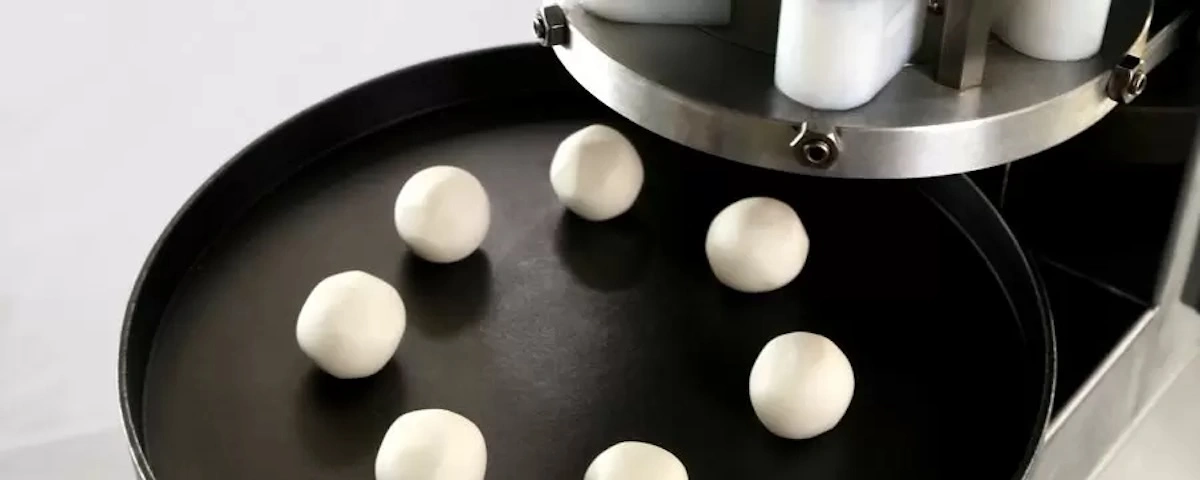
3. Types of Mochi Ice Cream Machines
Industrial mochi ice cream manufacturers are available in different models for application in different scales and automation levels:
1) Semi-Automatic Models
- Best suited for pilot or pilot-scale production.
- Mochi dough is manually loaded by operators, filling and shaping being automated.
- Production is 500 to 1,000 pcs/hour.
2) Fully Automatic Machines
- For twenty-four-hour high-volume production lines.
- Automates the dough loading, filling, forming, and conveyor output.
- Production is over 3,000 pcs/hour.
3) Custom Configurations
- Specialty nozzles, two hoppers, or pre-chill integrated areas in specialty-produced machines.
- Occasionally created just for particular product sizes, flavor SKUs, or co-extruded setups.
- Machine choice is based on what you want to produce, floor space, and what type of mochi ice cream products you are going to produce.

4. What to Consider When Choosing a Mochi Ice Cream Machine
Selecting the right mochi ice cream machine requires consideration of a combination of performance, flexibility, and usability. Some of the most important specifications to check are:
- Output Capacity: Match the speed of the machine with your present capacity of production and future growth. Outputs vary from 500 pcs/hr to over 3,000 pcs/hr.
- Portioning Accuracy: Select servo-controlled filling stations and volumetric dispensers to deliver precise product weights and reduced material waste.
- Size and Shape Ability: Choose equipment with mold adjustment or shaping heads with modules that can handle various SKUs, e.g., mini and full-size mochi.
- Cooling or Pre-Freezing Function: Cooling blinks in equipment prevent mochi deformation or stickiness prior to final freezing.
- Sanitation and Cleanliness: Make all components food-grade stainless steel and ensure ease of disassembling and user-friendly. Tool-free disassembly and CIP functionality reduce downtime.
- Ease of Use: Touchscreen PLC controls and recipe memory functions reduce operator training and user mistakes.
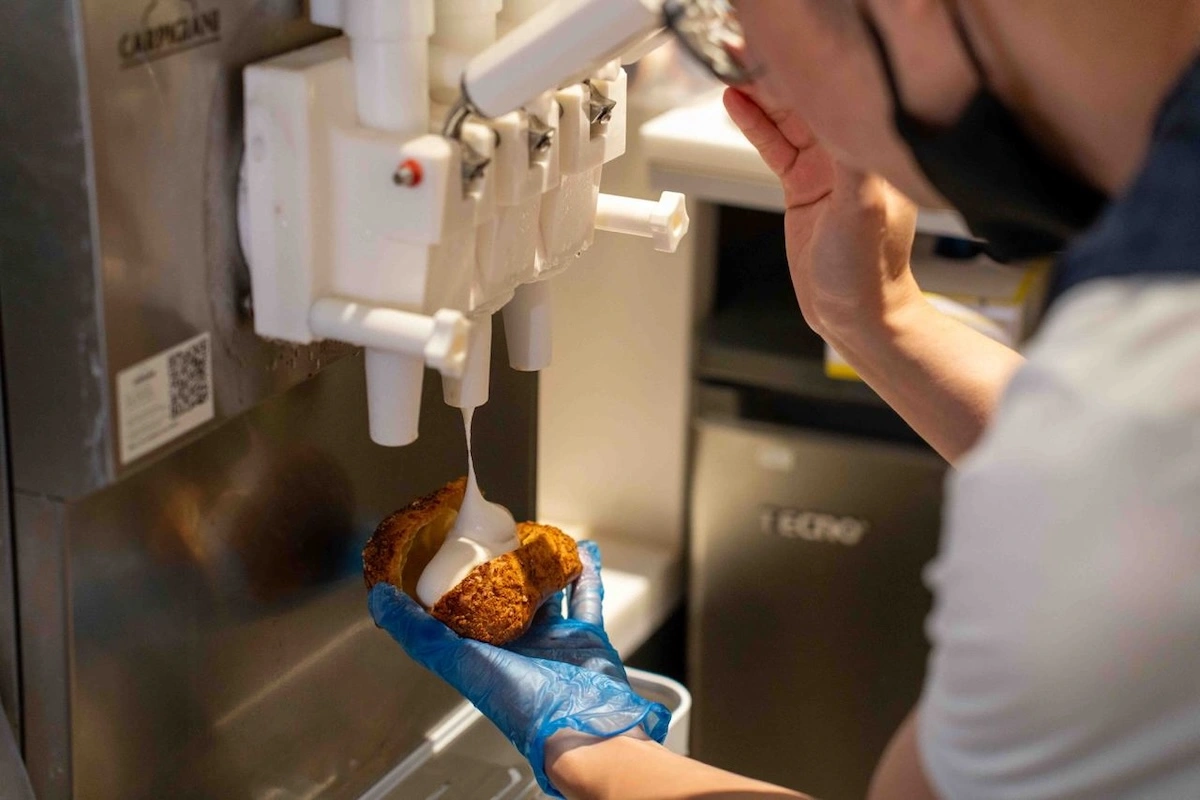
5. Mochi Ice Cream Machine Applications
Mochi ice cream machines are used in various businesses in the frozen food industry. With their sleek design and the volume at which they produce, they can be utilized by:
1) Dessert Factories
Mass volume producers selling to supermarkets, network stores, and global distribution networks use high-speed, fully automatic equipment for mass, uniform production. For example, a globally available global dessert food company like Lotte Yukimi Daifuku can use fully integrated encrusting and blast freezing lines to produce hundreds of thousands of mochi in one hour.
2) Boutique Brands and Startups
Small or semi-automatic machinery is utilized by conventional manufacturers to create distinctive flavors, high-quality ingredients, or limited-period seasonal specialty mochi ice cream fashions. An American start-up offering locally produced matcha and black sesame mochi ice cream at neighborhood farmers’ markets would opt for a 1,000 pcs/hr version in an effort to provide freshness as well as flexibility.
3) Private Label Manufacturers
Grocery store chains and food companies need OEM suppliers with equipment that facilitates quick SKU change and quality consistency. A store brand contract producer of mochi ice cream for a chain like Costco or Trader Joe’s would entail programmable-control machines and a few forming heads to make big orders with diversification.
4) Foodservice and Hospitality Chains
Restaurants, dessert houses, and hotel chains use mochi machines to produce on-site, fresh-made mochi or central kitchen shipments. A high-end chain of Asian fusion restaurants, for instance, would produce individualized flavor mochi desserts for plated dinners or take-out containers.
5) Export-Oriented Facilities
Overseas exporting factories need CE, UL, or FDA standard-qualified machinery with product weights in equilibrium, tightly sealed, and loaded into freezing and labeling machines. A Southeast Asian factory that produces frozen mochi for export to Europe and Australia would rely on tunnel-compatible mochi machines with extensive traceability programs in place.
6) Innovation Labs and R&D Kitchens
Contract manufacturers or industrial food companies use mochi ice cream makers to create new product samples, test the extensibility of dough, or simulate freezing in an industrial environment. For example, an R&D facility specializing in the development of low-sugar or alternative plant-based mochi versions may require a bench-scale semi-automatic maker to cycle recipes quickly.
No matter the production capacity or business model, mochi ice cream machines are a part of branding strategy, product quality, and scalable growth.
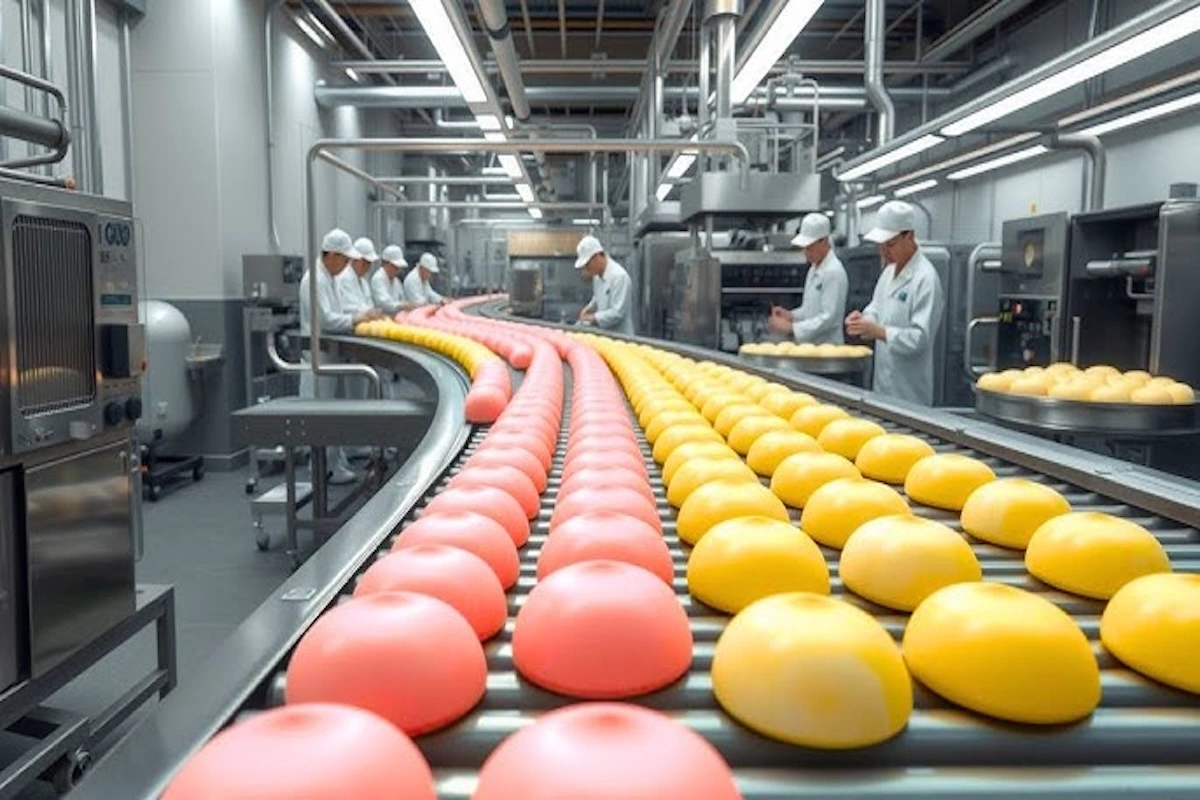
6. Cost of Mochi Ice Cream Machine
The price of a mochi ice cream machine is an investment, so thinking outside the cost and even long-term value and use would make sense.
1) Knowledge of Cost Ranges
The cost of a mochi ice cream machine would be very low or very high, depending on the degree of automation, level of production capacity, and degree of customization. Semi-automatics would cost between $10,000 $20,000. Their ideal application would be small productions or as a concept of an idea prototyping technique.
The above production and mid-production capacity, and the above automation ones, would be $30,000 to $60,000. Large production machines that also qualify for mass production would range from over $80,000 to $150,000 or more, depending on whether or not they have a freezer or packaging lines.
2) Choosing the Perfectly Sized Machine
Choosing a perfect machine is not only about finding one that accommodates your price. Start off by establishing your production levels and your environment. A low-volume semi-automatic will be ideal for a ghost kitchen or coffee shop, but a factory will require an automatic line with freezer integration. Think about the reputation of the supplier—do they provide local service? Do they ship spare parts out efficiently? A good service team can minimize your downtime and protect your investment.
Also, see if the machine complies with the regulatory requirements of your country, e.g., CE, UL, or FDA. The machine that might look great on paper but fails to get certified will bring about a delay or even generate the issue of compliance later.
3) Measuring Return on Investment
A good mochi ice cream machine will pay for itself in no time. Businesses can achieve ROI between 12 and 24 months, especially if production replaces labor or generates new sources of income. Automation translates into reduced cost of labor, improved consistency of quality, and the ability to produce bulk orders—three trifectas that all have bottom-line effects on the profit margin.
And if you do go private label or wholesale business, the value of scalability of automation will set you up to bid on bigger contracts and expand into new markets quicker. And by making in-house, you’ll be positioned to innovate better, find trends first, and retain ownership of your brands more so. These values all pay for themselves not only strategically but also.

7. Mochi Ice Cream Machines FAQs
1) How much per hour can a mochi ice cream machine make?
Depending on the type. Semi-automatic will churn out 500–1,000 pcs/hour, and automatic will make more than 3,000 pcs/hour for commercial use.
2) Will the machine make regular and mini mochi sizes?
Yes. Most machines have interchangeable molds or adjustable forming mechanisms to create different sizes and even custom shapes.
3) Is pre-freezing required after making the mochi balls?
For optimal shape hold and hygiene, industrial plants mainly use pre-freezing or stabilization spaces before full freezing to prevent deformation and adhesion.
4) What type of fillings can the machine accommodate?
The machine can work with any type of fillings, including dairy and non-dairy ice cream, fruit puree, and even savory or functional fillings like matcha or collagen.
5) How long does the machine need for cleaning?
The tool-free disassembly and modular design of machines are sanitizable in 60 minutes. CIP (Clean-In-Place) systems are available on certain models for quicker sanitizing.
6) Does the operator require training?
The machines all have an easy-to-use PLC touchscreen control panel, but need some basic training for precision and hygiene standards.
7) Is the SFT machine internationally compliant?
In fact, SFT machines are FDA-approved, CE-approved, and UL-approved, and therefore suitable for export markets worldwide.
8) How long is the ROI for a mochi ice cream machine?
Generally speaking, the ROI for most companies takes 12–24 months, particularly when the manual labor is being substituted or when the production is being scaled up proportionately.
8. Conclusion
No longer a high-end luxury, mochi ice cream is today a category in itself of frozen foods globally. The ultimate most popular flavor and texture combination of the consumer is being exploited by manufacturers to support new products, store brands, and foodservice offerings. A mochi ice cream machine gives you the ability to produce in quantity, minimize variation, and attain levels of quality and sanitation. When you are opening a luxury boutique-mochi store or moving to mass production manufacturing, equipment of the correct kind is the key to profitable growth.

